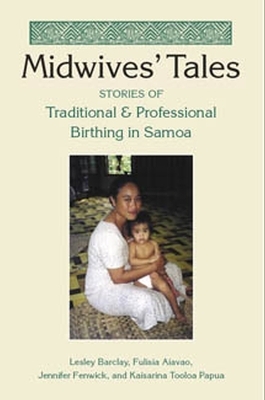
Midwives' Tales
Stories of Traditional and Professional Birthing in Samoa
Seiten
2005
Vanderbilt University Press (Verlag)
978-0-8265-1497-4 (ISBN)
Vanderbilt University Press (Verlag)
978-0-8265-1497-4 (ISBN)
The result of a ten-year collaboration between Australian and Samoan researchers and midwives, this book compiles the first-person stories of several generations of Samoan midwives, both those who use traditional techniques for home birth and those who use Western techniques in a hospital. The voices are vivid and varied, often displaying the Samoan gift for storytelling. The overall picture of changing birthing practices is complex and sometimes tinged with ironies. As the introduction says, ""These Samoan nurses and midwives did not immediately attempt to mediate new and old ways of birthing after the colonial leadership of their profession left. They themselves became cultural agents for change as they continued the role of 'colonizing' their own birth tradition and taught the fa'atosaga [Samoan for midwife] Western techniques, at the same time trying to provide a professional midwife for all women. Paradoxically they often chose a social midwife for their own births and supported or at least condoned the social midwives close to them...Kaisarina, while working as the leading professional midwife in the country, and working almost totally in hospital practice herself, simultaneously assisted her mother-in-law with her social practice of midwifery. Vipulo's story shows how a professional midwife preferred to have her mother, a social midwife, deliver her at home."" A particular objective of the authors is to encourage a reconception of maternity care in countries where professional services are rare and not available to all women. The book challenges common assumptions, still held in many postcolonial countries, that a simple migration of Western-style, hospital-focused care is necessarily always an achievable or desirable goal. It also demonstrates the considerable progress that one group has made in rethinking and developing a model of maternity care that works within their society and culture. As these midwives' stories suggest, solutions to some of the problems caused by gaps in the kinds of resources that Westerners take for granted can be found in partnerships and cultural wisdom that already exist in Samoa and, by extension, other developing countries.
Lesley Barclay was Director at the Centre for Family Health and Midwifery at the University of Technology in Sydney, Australia, when this book was written. Fulisia Alavao is the head of the Faculty of Nursing at the National University of Samoa. Jennifer Fenwick is Associate Professor at Curtin University and the King Edward Memorial Hospital for Women in Perth, Western Australia. Kaisarina Tooloa, is the senior nurse midwife in Samoa and has a BN she completed in her own country through external study. She lives in the village with her extended family.
| Erscheint lt. Verlag | 31.7.2005 |
|---|---|
| Zusatzinfo | Illustrations |
| Verlagsort | Tennessee |
| Sprache | englisch |
| Maße | 155 x 229 mm |
| Gewicht | 400 g |
| Themenwelt | Medizin / Pharmazie ► Gesundheitsfachberufe ► Hebamme / Entbindungspfleger |
| ISBN-10 | 0-8265-1497-9 / 0826514979 |
| ISBN-13 | 978-0-8265-1497-4 / 9780826514974 |
| Zustand | Neuware |
| Haben Sie eine Frage zum Produkt? |
Mehr entdecken
aus dem Bereich
aus dem Bereich
Evidenz und Erfahrung
Buch | Softcover (2024)
Springer (Verlag)
49,99 €
eine Arbeitshilfe für Hebammen im Praxisalltag
Buch | Softcover (2023)
Kohlhammer (Verlag)
42,00 €
Buch | Softcover (2023)
Urban & Fischer in Elsevier (Verlag)
36,00 €


